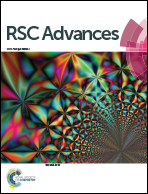Engineered regenerated bacterial cellulose scaffolds for application in in vitro tissue regeneration
Abstract
In this study, we sought to synthesize regenerated bacterial cellulose (rBC) scaffolds for application in in vitro tissue regeneration. Bacterial cellulose (BC) was dissolved in N-methyl morpholine-N-oxide (NMMO), and salt crystals were added as porogens, followed by casting in molds and incubation in water. The synthesized scaffolds were characterized using Fourier transform infrared (FT-IR) spectroscopy and field-emission scanning electron microscopy (FE-SEM). The FT-IR spectra exhibited bands characteristic for BC in rBC scaffolds, indicating no alteration in chemical structure, while FE-SEM revealed a porous structure of the rBC scaffold. The scaffolds exhibited very high swelling ratio, indicating enhanced water absorption and nutrient exchange capacity. The in vitro biocompatibility of the rBC scaffolds was tested based on the adhesion, growth, and proliferation of animal fibroblasts (NIH 3T3), and the osteogenesis of animal osteoblasts (MC3T3-E1). Results indicated good cell adhesion, penetration, and proliferation. Alkaline phosphatase (ALP) activity and Alizarin red staining (ARS) revealed osteogenic differentiation of animal osteoblasts on the scaffolds. These results demonstrate that the rBC scaffolds are potential candidates for future tissue engineering applications.


 Please wait while we load your content...
Please wait while we load your content...